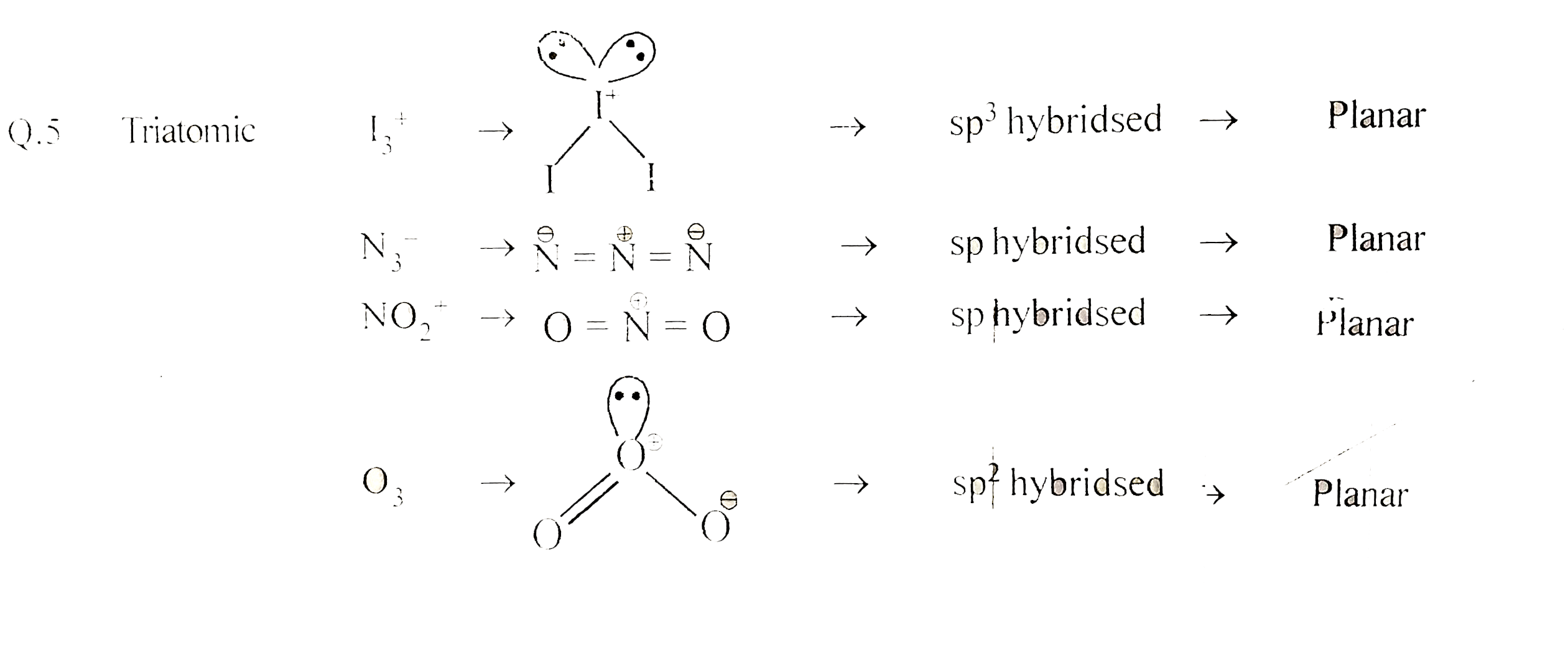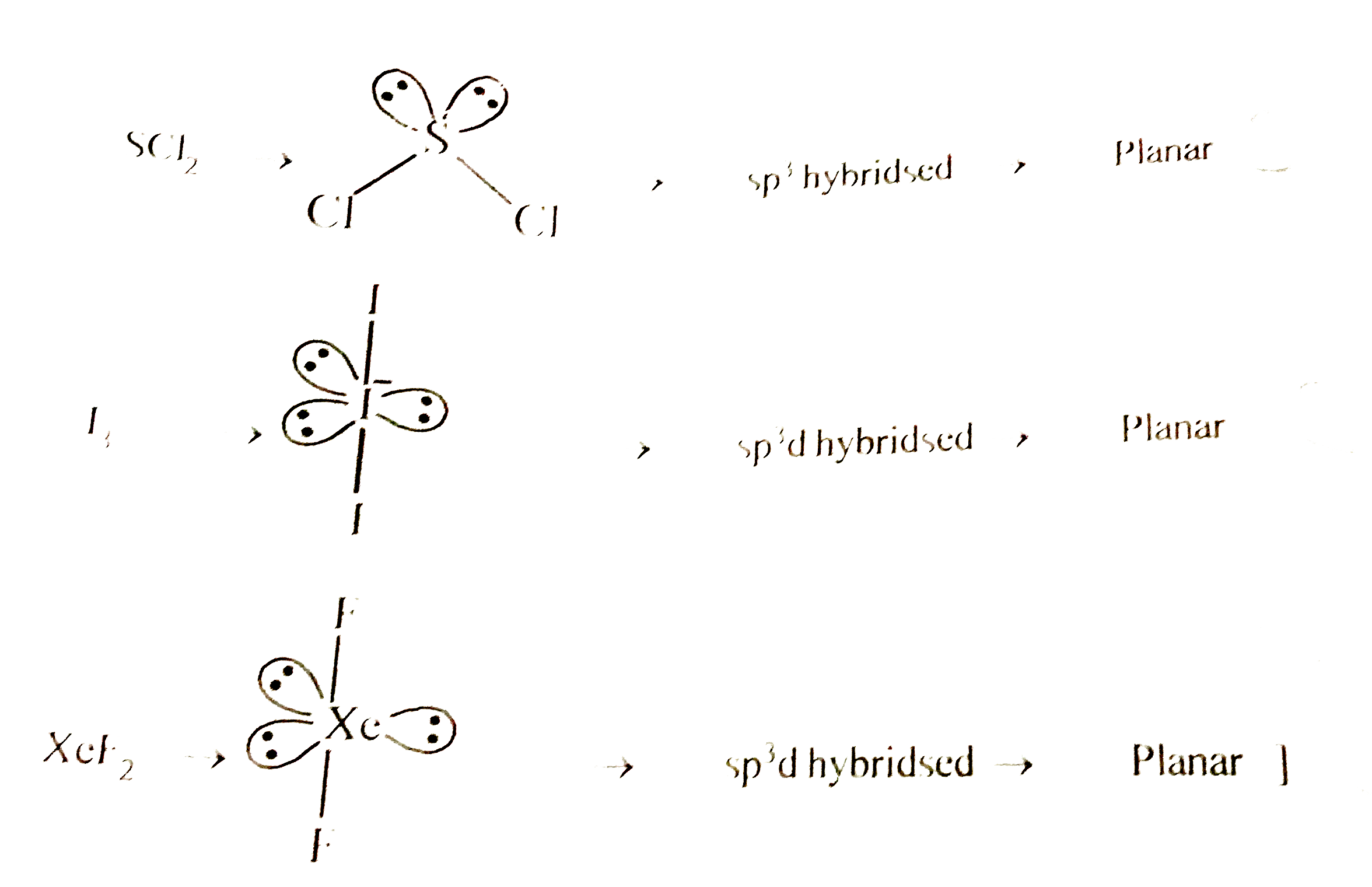Among the triatomic molecules/ions, XeF−5,N−3,I3,NO+2,O3,SCl2,Icl4,I3 and XeF2 the total number of planar molecules (s)/ ion (s) where the hybridization of the centre atom does not have contribution form the d-orbital (s) is :
The correct Answer is:5
Topper's Solved these Questions
- TEST PAPERSBOOK - BANSALCHAPTER - TEST PAPERSEXERCISE - CHEMISTRY PART B
6 Videos
- TEST PAPERSBOOK - BANSALCHAPTER - TEST PAPERSEXERCISE - CHEMISTRY PART C
24 Videos
- TEST PAPERSBOOK - BANSALCHAPTER - TEST PAPERSEXERCISE - CHEMISTRY PART-B
1 Videos
- SOLUTIONSBOOK - BANSALCHAPTER - SOLUTIONSEXERCISE - Exercise4
32 Videos
- THERMOCHEMISTRYBOOK - BANSALCHAPTER - THERMOCHEMISTRYEXERCISE - Exercise 4
15 Videos
Similar Questions
Among the triatomic molecules/ions, BeCl2,N−3,N2O,NO+2,O3,SCl2,ICl−2,I−3andXeF2, the total number of linear molecule (s)/ions(s) where the hybridization of the central atom does not have contribution from the d-orbital (s) is
View SolutionAmong the triatomic molecules/ions BeCl2,N−3,N2O,NO+2,O3,SCl2,lCl−2,l−3 and XeF2, the total number of linear molecules (s)/ion(s) where the hybridisation of the central atom does not have contribution from the d- orbitals (s) is [atomic number of S=16,Cl=17,I=53 and Xe=54]
View Solution
Knowledge Check
Out of (i) XeO3(ii)XeOF4and(iii)XeF6 the molecules having same number of lone pairs on Xe are
A(i) and (ii) onlyB(i) and (iii) onlyC(ii) and (iii) onlyD(i),(ii) and (ii) only
Among the triatomic molecules/ions BeCl2,N−3,N2O,NO+2,O3,SCl2,lCl−2,l−3 and XeF2, the total number of linear molecules (s)/ion(s) where the hybridisation of the central atom does not have contribution from the d- orbitals (s) is [atomic number of S=16,Cl=17,I=53 and Xe=54]
View SolutionAmong the following how many of the molecules are linear.
CO2,NO−2,SO2,N−3,C2H2,I−3,XeF2,CS2
View SolutionAmong B2H6,B3N3H6,N2O,N2O4,H2S2O3 and H2S2O8 the number of molecules containing covalent bond between two atoms of the same kind is
View SolutionHow many of the following molecles /ion are planar?
CO2−3,NO−3,XeF4,XeO4,SF4,I−3,COCl2,SO3,ClO−3,I2Cl6 (solid)
View SolutionFind the total number of polar molecules
SF4,PCl5,PCl3F2,SF6,XeF2,NO+2,BF2Cl,BF3,PF3Cl2
View SolutionDraw the structures of the following molecules :
(i) XeF6
(ii) H2S2O7
View SolutionAmongst the following, the maximum number of isoelectronic molecules/ions are
XeO3,BrO−3,ClF,XeF2,OF2,XeF4,ICl−4,ClO−,IBr−2.
View Solution


